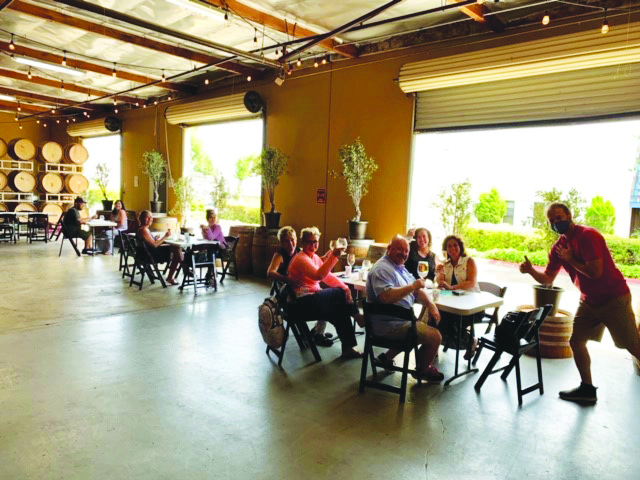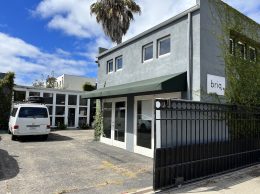Reopening and closing tough on tri-county businesses
IN THIS ARTICLE
- left Topic
- pacbiztimes Author
By pacbiztimes Friday, July 10th, 2020

Karen Stewart, who owns Pier City Cider and Four Brix Winery in Ventura, closed for 10 weeks because of the COVID-19 pandemic. Her businesses were open for five weeks before the state ordered them shut again amid rising coronavirus cases on the Central Coast. And it will be at least the fourth week of July before they can reopen again.
The chaotic climate of closing and reopening makes it difficult for Stewart to do even the basic parts of owning a business. Stewart has an event space, and Ventura County is allowed to hold some small, socially-distanced events, but she can’t work with people to schedule those events when she doesn’t know if she’ll be able to open.
“We just have no way of being able to plan,” Stewart said. “How do you plan for your future? How do you budget? You can’t.”
Stewart’s dilemma is one example of the difficult environment for thousands of small, hospitality businesses from Thousand Oaks Boulevard to Main Street to State Street as Ventura and Santa Barbara counties reverse earlier opening trends. And now it appears San Luis Obispo County may join in turning back earlier reopening measures as the Central Coast gets back in sync though headed in the wrong direction.
Public health officials announced July 7 that SLO County’s case rate was above the level state guidelines require for reopening. Santa Barbara and Ventura counties are also experiencing heightened caseloads, among other factors, and because of the COVID-19 transmission in the two counties, the state required all bars, pubs and other social drinking establishments to close down.
Both Santa Barbara and Ventura counties were placed on the County Monitoring List prior to the state’s order. SLO County wasn’t required to close beaches or its bars over the Fourth of July weekend, but County Public Health Officer Penny Borenstein issued a temporary order to close bars, pubs and breweries through the holiday weekend as a precautionary measure.
If SLO County is placed on the state’s list, the order might return — and become permanent.
“Our transmission rate doesn’t tell the whole story, but it is potentially a leading indicator,” Borenstein said in a news release. “These numbers are a strong reminder that we are bringing COVID-19 home —from travel, from work, from outings — and we need take all the necessary precautions to ensure that SLO County can remain open and our health care system can continue to care for the sick.”
Meanwhile, in Ventura, Stewart is still adding up the cost of the on-again, off-again business climate. Reopening the first time required her to teach new cleaning protocols to everyone, and Stewart hired an HR firm to help make sure protocols were followed and forms were being filled out. Stewart also had to source gloves, disinfectants, cleaning supplies and masks for her crew.
Stewart plans to reopen as soon as she can, and some of the costs from reopening the business the first time won’t be repeated. If state regulations change by the time the winery and cidery are allowed to reopen, she’s prepared to adjust and include them.
“If we get the green light, we’ll be ready to go,” Stewart said. “We need to survive.”
Unfortunately, it might be longer than three weeks for counties to reopen their businesses once closed. In order to pass state guidelines, counties must have less than 100 active cases per 100,000 people, as well as a testing positivity rate of less than 8 percent. In Santa Barbara County, there are 227.4 cases per 100,000 people – more than twice state guidelines – and the testing positive rate was 8.6 percent. In Ventura County, the situation is slightly better, but still not below state guidelines. There were 183.9 active cases per 100,000 people, according to the state’s numbers.
Ventura County Medical Center also activated its surge plan July 6. Where there are still ICU beds at other facilities around the county, VCMC’s Intensive Care Unit is full and can no longer accept more patients, and VCMC CEO John Fankhouser said even the hospital’s typical overflow plan — which involves some ICU patients being kept in the emergency room — is full.
Because of that, the hospital was examining plans to put ICU patients in another ward of the hospital.
Ventura County has additional surge plans if hospitals are overwhelmed by COVID-19 cases, and those surge plans were an essential part of the county’s ability to reopen. The county can, if needed, expand its ability to treat people by reopening the previous Community Memorial Health System Building. By utilizing the old building, Ventura County can add up to 800 beds to its capacity.
While county health departments count up their beds and hope they don’t need to reach surge capacity, small business owners like Stewart are hoping for yet another reversal of fortune — this time in their favor. They need a steep decline in new infections to get the green light to open up again.
— Contact Amber Hair at [email protected]
Related Articles
 Friday, October 14th, 2022
Friday, October 14th, 2022











